
You’ve built a quality prospect list, segmented it smartly, and written persuasive, personalized copy.
So you’re guaranteed to see success from your email campaigns, right?
Unfortunately not.
According to Return Path, a staggering one in six messages never reach the inbox.
Clearly, the last thing you want is for your perfectly crafted emails to hit a bunch of spam folders.
Which is why you need to dig into our ultimate email deliverability guide, where we’ll explain:
- What email deliverability is all about
- Why it’s important
- What practical steps you can take to boost your email deliverability rate
What Is Email Deliverability?

Email deliverability reflects the chances of your emails reaching your recipients’ main inboxes.
Despite having extremely similar-sounding names, email deliverability and email delivery aren’t one and the same thing:
- Email delivery is when an email is successfully sent to the recipient’s email server
- Email deliverability is when an email actually arrives in the person’s primary inbox
It’s possible for email campaigns to have superb email delivery but dreadful deliverability, because a high proportion of emails made it to the server, but many of those ended up in spam folders.
For many cold outreach professionals and email marketers, email deliverability is one of the key metrics of success. After all, if no one ever reads your emails, you’re not going to achieve your campaign goals.
There are lots of factors that affect email deliverability. We’ll discuss this in greater depth later in the article, but common issues include:
- Failing to verify your contact list
- Making it hard for recipients to opt out
- Seeing low engagement with your emails
- Sending emails from a free email domain
- Recording a high unsubscribe rate
Why Is Email Deliverability Important?
1. Successful Email Deliverability = Successful Email Campaigns
Email might be one of the oldest forms of digital sales and marketing, but it’s still extremely relevant today.
According to Campaign Monitor, email generates a return on investment of $44 for every $1 spent, so the rewards are clearly out there.
But all your time spent writing engaging copy and building a high-quality, current list of prospects will be wasted if your emails never arrive in the recipients’ main inboxes.
In other words: if achieving maximum deliverability isn’t a big focus of your current activity, you’re not seeing the best results from email outreach.
2. Beat Your Rivals to the Main Inbox
With the average person currently receiving over 330 emails a day, the email landscape has never been more competitive.
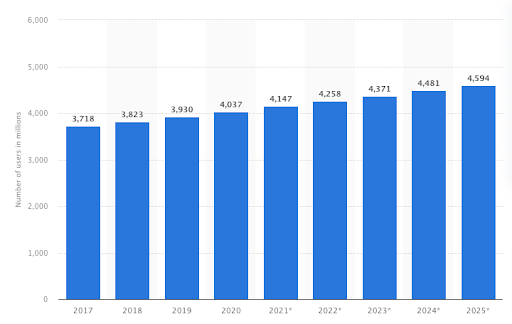
Unsurprisingly, not all of those emails are 100% legit.
Data shows that in September 2021, the number of emails sent every day stood at almost 106 billion, yet more than four-fifths of them were rated as spam.
That endless torrent of junk mail is triggering an email service provider backlash, with Gmail’s machine learning algorithm blocking nearly 10 million spam and malicious emails every minute.
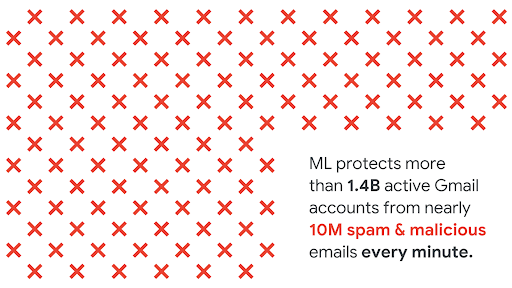
In effect, you’re in direct competition with your rivals to have your emails “approved” by inbox providers like Gmail and Outlook, and to get them filtered into the main inbox rather than the junk folder.
Even a small uplift in your deliverability rate could give you the edge.
3. High Deliverability Dovetails With Other Email Metrics
Mail providers are far more focused on engagement rates than they used to be.
That makes sense; if people open, click through, and reply to your messages, it’s a positive indication that your emails deserve to avoid the junk folder.
In other words, by increasing your email deliverability rate, you’ll inevitably also benefit a whole bunch of other key email metrics.
Email Deliverability for Cold Email vs. Email Deliverability for Email Marketing
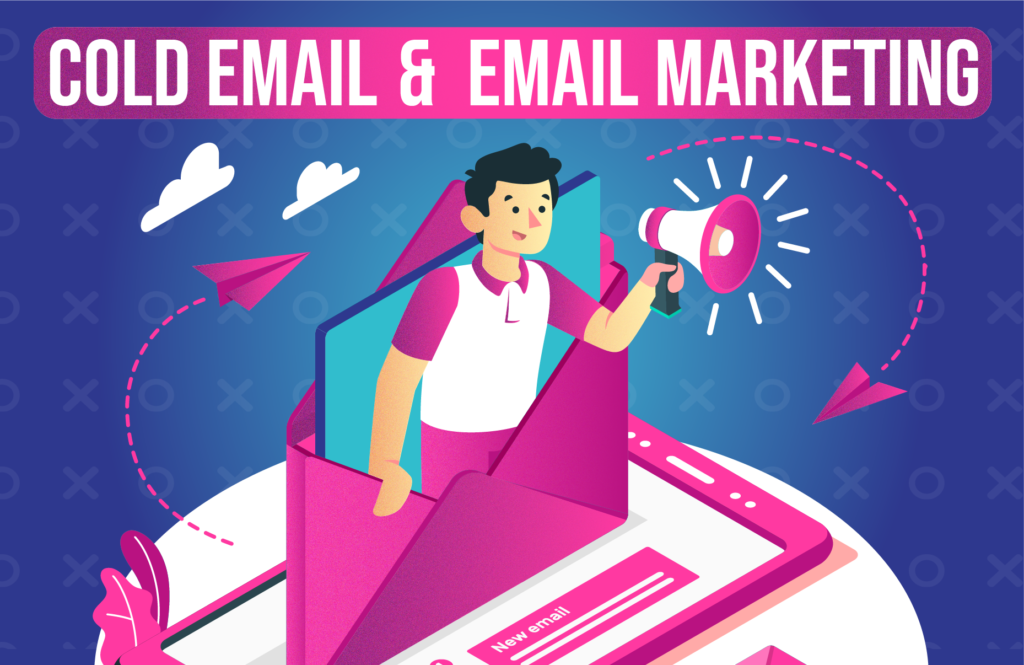
Now it’s time to make a key distinction:
Deliverability looks different depending on what “type” of email activity you’re running:
- Cold email outreach: Where you find relevant prospects, build your own email lists, and reach out to them.
- Email marketing: Where people opt in to receive your marketing communications.
There are literally hundreds of factors that impact whether or not your messages will land in the main inbox, but not all of those factors apply to both email marketing and cold email.
With that in mind, we’re going to dig into:
- Factors that affect all email deliverability
- Factors that only affect cold email outreach
- Factors that only affect email marketing
Factors Affecting All Email Deliverability
Whatever type of email activity you’re involved in, you should definitely be paying attention to the following factors:
Authentication
Email authentication allows inbox providers to feel confident that a message originates from a “real” (i.e. trustworthy) sender, rather than someone with malicious intent.
The more confidence they have that your messages are totally legit, the more likely those messages are to hit the main inbox.
Email service providers don’t leave the important task of authentication to guesswork. Instead, they use various email authentication methods, including:
- SPF: Sender Policy Framework is an email authentication protocol designed to detect instances of forged sender addresses.
- DKIM: Much like SPF, DomainKeys Identified Mail is used to check that a sent email was authorized by the domain owner.
- DMARC: Domain-Based Message Authentication, Reporting & Conformance is designed to protect email domain owners against unauthorized use (often called “email spoofing”).
Want to learn more about email authentication? Check out our guide on how to avoid the spam folder.
IP & Email Warmup
Need to change your IP address?
Don’t currently have one?
Either way, you need to warm up your new IP and email account before you can start sending emails at scale.
Why?
Because inbox providers are naturally suspicious about emails stemming from a brand-new IP address.
Rather than going from 0 – 100 overnight, start by sending a small volume of high-quality emails to verified addresses, then gradually increase your volumes over time.
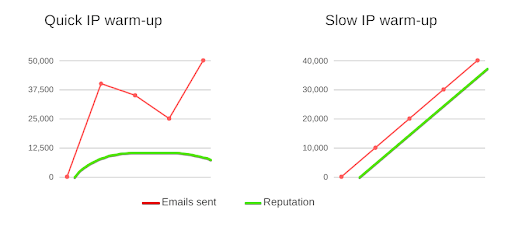
There are no set rules on how long the warmup process should take, but we generally recommend scaling up your send rate over at least four weeks for best results.
That way, you stand the best chance of building a strong IP reputation, which means more chance of avoiding email deliverability issues.
Our recommendation is to use an email warmup tool to automate this process and improve your deliverability.
Sender Score / Reputation
Think of your sender score as your email program’s credit rating.
Every sender has a score from 0 – 100. As you can probably guess, a high score gives you a better chance of achieving stronger email deliverability.
So how is sender score determined?
Increasingly, it’s a case of building up your IP and domain reputation.
If mailbox providers believe your IP address and domain are reputable, congratulations — email deliverability shouldn’t be a problem for you.
But as we’ve already noted, it takes time to build a positive reputation.
And your score will naturally fluctuate over time based on your activity, so don’t treat your sender score as a one-and-done activity.
Unsubscribes
To an extent, unsubscribes aren’t a totally negative thing.
After all, if someone doesn’t want to receive your emails, why waste time reaching out to them?
But there’s no getting away from the fact that a sky-high unsubscribe rate can do real damage to your reputation. It doesn’t exactly show mailbox providers that you’re sending quality emails.
In turn, that leads to poor deliverability.
Email Engagement
The “E” word again.
Engagement is a massive factor in successful email deliverability.
If people engage with your emails — open them, click through from them, reply to them — that’s a clear sign for inbox providers that your emails don’t deserve to be filtered as spam.
Obvious as it sounds, improving your engagement rate is largely about boosting the quality of your email content.
After all, two-thirds of email recipients decide to flag email as spam based on the subject line alone, according to OptinMonster.
While lots of “experts” claim that writing better email content means avoiding common “trigger words” like FREE in your subject lines and body copy, that’s not the full story.
Fact is, if you’re actually offering a free trial (for example), why wouldn’t you use the word “free”?
So it’s not specifically about steering clear of certain words, and more about using words in an intelligent, engaging manner to elicit the desired response from recipients.
One final point on this: improving your content isn’t just about words.
Be sure to avoid other potentially spammy practices, like adding lots of links in your body copy and adding attachments to your emails.
Factors Affecting Cold Email Deliverability
If you’re a cold email professional, these points apply specifically to your campaigns:
Sending Patterns
This is a tough one.
On one hand, your data should demonstrate the days and times when your emails are most likely to be opened.
But on the flip side, if you only ever send emails at 10:15am on Tuesdays, that looks a lot like bulk emailing — and inbox providers don’t like bulk cold emails.
Instead, play around with your sending patterns so your activity looks more natural.
It’s also best to avoid spikes in activity.
By which we mean, if you don’t send any emails for a month, then suddenly send 500 in an hour, that’s going to look pretty sus.
Email Volumes
The volume of email you send also has an impact on your email deliverability.
Specifically, servers that send high volumes of email are more likely to stand out as spammy.
To make things a little more complicated, rules around what constitutes a “high” cold email volume vary from one email service provider to another.
For a free Gmail account, you might get pinged for sending 100 emails a day, whereas with a premium service, you could send literally thousands a day and still be fine.
Cleaning / Validating Your Email List
Nothing is more likely to cause poor email deliverability than a bunch of typos on your email list.
Before you hit “send” on your next cold email campaign, be sure to use a dedicated tool to lean up your list of contacts.
That way, you can be sure that you’re only reaching out to verified addresses.
Pro tip: Postaga uses Hunter.io integration to automatically verify the addresses on your mailing list.
Spam Traps
While purchasing an email list from a third party is undeniably a quick way to scale up your cold email outreach, it’s also a good way to end up triggering a spam trap.
There are various types of spam traps, but they work in pretty much the same way: you email an unlisted email address that could only have been found through illegitimate practices (like website scraping or bulk email harvesting).
That one action could get you added to an email blacklist, which is a surefire way to tank your deliverability.
Bounce Rate & Hard / Soft Bounces
Email bounce rate is yet another factor that affects email deliverability rates.
Confusingly, there are two different types of bounces: hard and soft.
Soft bounces stem from emails that can’t be delivered due to some kind of temporary (and fixable) reason, such as:
- The recipient’s inbox is full
- The email server isn’t working
- The email is too big
When a soft bounce is recorded, email providers will attempt to resend the offending email multiple times.
So far, no issue. The problems start if that email still can’t be delivered after several attempts, because then it’ll be recorded as a hard bounce.
Hard bounces are emails that can’t be sent for permanent and unfixable reasons, like:
- The address contains typos
- The server isn’t accepting emails
- The domain doesn’t exist
Generating a lot of hard bounces will hurt your sender reputation, because it suggests you don’t really know the people you’re emailing.
While there are no clear-cut acceptable thresholds for bounce rates, try to aim for beneath the 2% mark.
Factors Affecting Email Marketing Deliverability
List Hygiene
Email list hygiene is the practice of removing inactive, unengaged subscribers and invalid addresses from your email marketing list.
That way, you should be left with a warm email list comprised solely of people who have:
- Opted in to receive your emails
- Been contacted by your brand recently (i.e. within the last couple months)
- Regularly engaged with your marketing communications
Email marketers should routinely practice good list hygiene to ensure they only ever email people who actually want to receive their messages.
Do that and your engagement metrics will be strong, thereby keeping you out of the junk folder.
Double Opt-Ins
Requesting double opt-ins from new subscribers is an effective way to ensure that the only people on your marketing list are legitimate accounts who definitely want to hear from you.
As the name suggests, the double opt-in process means requesting an extra level of confirmation from email subscribers.
Rather than adding them to your list as soon as they give you their name and email address, you’ll send them an email asking them to confirm the subscription.
While that means forcing your potential customers to do a little more leg work before they can receive your marketing communications, it’s an effective way to steer clear of spam traps and safeguard your sender reputation.
9 Best Practices to Improve Your Email Deliverability
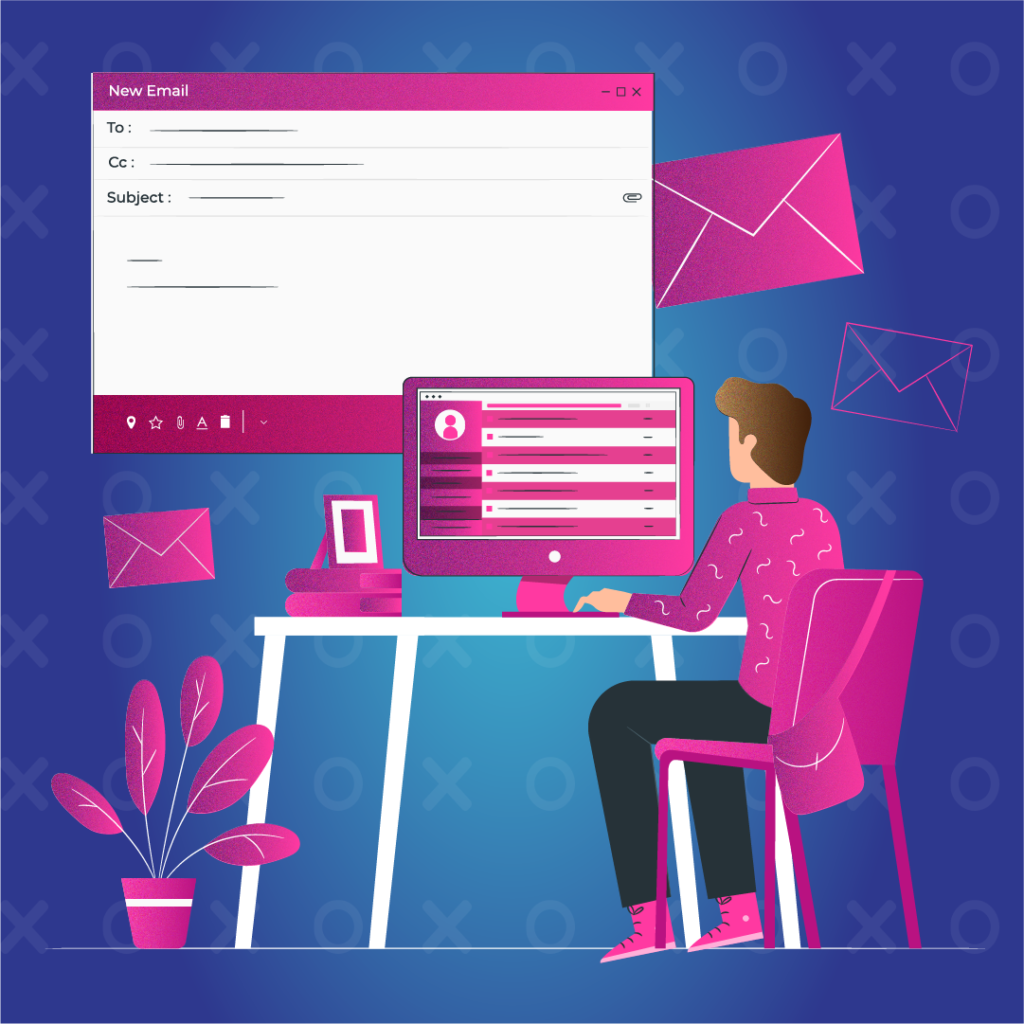
Clearly, there are a whole lot of factors that can cause delivery errors and issues.
But what practical steps can you take to improve your deliverability?
Let’s take a look at nine email deliverability best practices you can implement right away:
1. Keep Your Email Lists Current & Clean
Even if you’ve crafted the perfect prospect list full of verified email addresses, you still need to keep it up to date.
If certain people aren’t engaging with your emails, boot them off your list, because constantly spamming them will damage your sender reputation.
Also, be aware that even if you gathered an email address legitimately, it could still turn into a spam trap down the line.
In short, if an account hasn’t opened one of your emails in months, don’t keep hoping that next time’s a charm.
2. Ask Recipients to Add You to Their Address Book
Because inbox providers are so committed to weeding out spam, there are inevitably times when emails that recipients actually want to read still land in the spam folder.
For that reason, it’s worth asking prospects to “whitelist” your address by adding it to their address book.
That way, you can be certain that your emails will reach them going forward.
3. Include a Clear Unsubscribe Option (& Honor Unsubscribes)
Always give people a way to opt out of your email communications by including an unsubscribe link or button, or asking them to email you with a word like “unsubscribe” or “stop”.
This isn’t just a nice thing to do; it’s literally a legal requirement in many countries (including the US).
Your method for allowing people to unsubscribe isn’t important; what matters is that it’s easy for your recipients to opt out, and that you honor their requests.
In other words, once someone chooses to opt out, it’s imperative that you remove them from your email list.
4. Use a Trustworthy Sender Name
We’re so used to receiving spam emails that we naturally avoid opening messages from people we don’t know.
Using an easily recognizable and trustworthy name can help to persuade prospects that you’re a legitimate sender, not a spammer.
Generally, we advise sending emails from a real person rather than a branded account.
But different approaches work for different senders. We’ve also run successful cold outreach campaigns by adding a first name and company name (e.g. “Andy from Postaga”).
5. Keep Emails Short & Sweet
You might think writing longer emails demonstrates that you’ve put a lot of time and effort into your communications, but in reality, including a ton of copy will only draw unwanted attention from spam filters.
Also, people just don’t like reading lengthy emails.
There are only so many hours in the day, and we don’t want to spend any longer than necessary reading email copy.
So it’s no surprise that research from Boomerang revealed the sweet spot for email length is around 75 – 100 words.
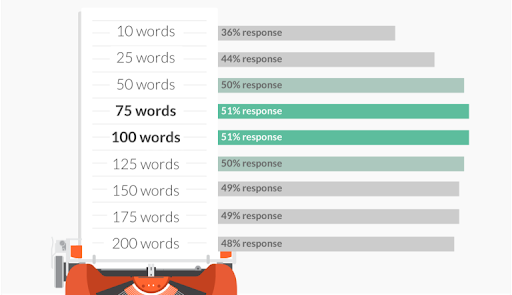
If you absolutely can’t avoid writing a longer email, at least make your recipients’ lives easier by breaking up the text into shorter paragraphs, and add bullet points and subheadings where relevant.
6. Test Emails Before You Hit “Send”
So many deliverability issues could be solved before they even happen if more people simply tested their emails before sending.
This isn’t a complicated process. Just make sure:
- Your copy isn’t riddled with typos
- Your hyperlinks (if any) are pointing to the right landing pages
- Your merge fields are displaying correctly
7. Get a Third-Party Sender Accreditation
A third-party sender accreditation is a powerful tool for cold email pros.
In a nutshell, a sender accreditation is a third-party process for verifying that email senders are legit.
To get accredited, you’ll need to follow certain guidelines that prove you’re trustworthy.
Do that and your domain will be added to an email whitelist, which will help your deliverability no end.
8. Monitor Your Sender Reputation
We’ve already spoken about the importance of maintaining a strong sender reputation.
If your IP or domain has a poor reputation, there’s much less chance of your emails arriving in the main inbox.
Get into the habit of regularly monitoring your score using a tool like Validity’s Sender Score.
9. Keep Abreast Of Email Laws & Trends
Email is changing all the time.
And we don’t just mean best practices.
Inbox providers change and email black lists alter their tactics all the time in a bid to block more spam.
Not only that, but new laws around email sending can come into effect too.
Take the time to read up on the latest trends in email outreach to make sure you’re not basing your email strategy on outdated information.
Conclusion
There are lots of factors affecting email deliverability, and lots of steps you can take to improve it.
If all that information sounds overwhelming, remember that ultimately, it all boils down to something very simple:
Target recipients who want to hear from you with email content that’s useful and informative.
Get that right and your email deliverability rate should cease to be a headache.
Free 14-Day Trial
Start building relationships now with your fully-featured 14-day trial!
How We Compare
Terms | Done-For-You Terms | Privacy | Write For Us | Press
© 2024 Postaga. All Rights Reserved. Made with 
